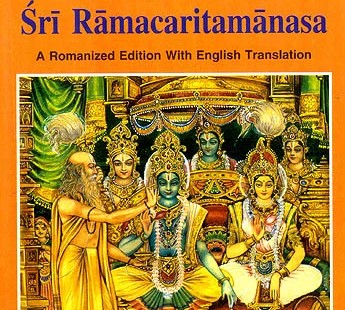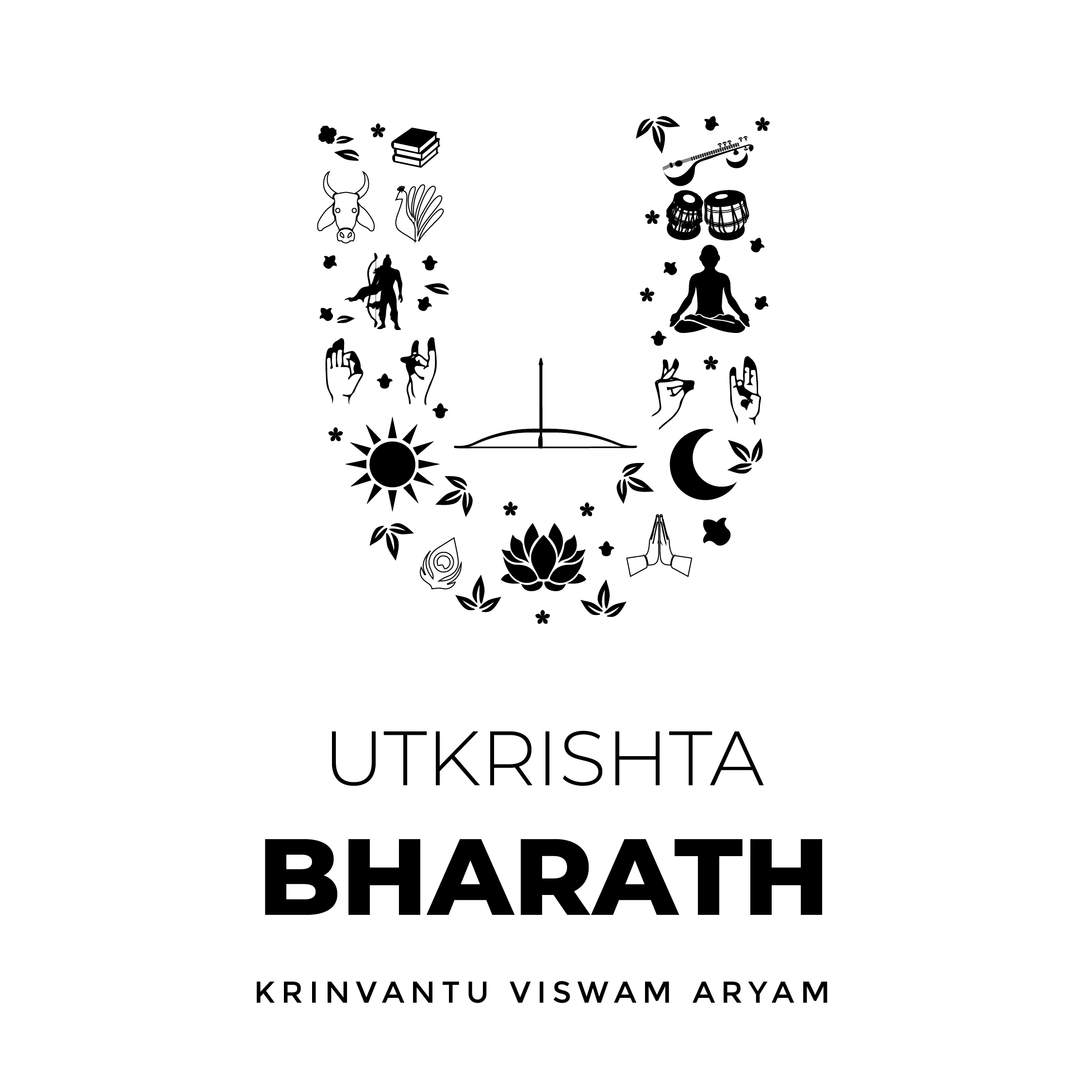Sri Ramacaritamanasa

Sri Ramacaritamanasa is a retelling of Rama Katha by Shri Goswami Tulsidas. It is a Kavya(poem) written in the praise of Lord Rama..
There is a lot of wisdom present in this text but I shall limit the discussion on very few of them.
The text lays down ideals not just for the time it was written in but for eternity. One such example is the ideal of Polity (Ram Rajya).
राम राज बैंठें त्रेलोका। हरषित भए गए सब सोका।।
बयरु न कर काहू सन कोई। राम प्रताप बिषमता खोई।।
Sri Rama’s installation to the throne brought joy to all the three spheres and ended all their sorrows. No one bore enmity to another; Sri Rama’s glory had obliterated all disharmony
दो-बरनाश्रम निज निज धरम बनिरत बेद पथ लोग।
चलहिं सदा पावहिं सुखहि नहिं भय सोक न रोग।।
Devoted to duty each according to his own caste and stage of life, the people trod the path of the Vedas and enjoyed happiness. They knew no fear, nor sorrow nor disease.
दैहिक दैविक भौतिक तापा। राम राज नहिं काहुहि ब्यापा।।
सब नर करहिं परस्पर प्रीती। चलहिं स्वधर्म निरत श्रुति नीती।।
चारिउ चरन धर्म जग माहीं। पूरि रहा सपनेहुँ अघ नाहीं।।
राम भगति रत नर अरु नारी। सकल परम गति के अधिकारी।।
अल्पमृत्यु नहिं कवनिउ पीरा। सब सुंदर सब बिरुज सरीरा।।
नहिं दरिद्र कोउ दुखी न दीना। नहिं कोउ अबुध न लच्छन हीना।।
सब निर्दंभ धर्मरत पुनी। नर अरु नारि चतुर सब गुनी।।
सब गुनग्य पंडित सब ग्यानी। सब कृतग्य नहिं कपट सयानी।।
Under the rule of Rama there was none who suffered from affliction of any kind — whether of the body, or proceeding from divine or supernatural agencies or that caused by another living being. All men loved one another: each followed one’s prescribed duty, conformably to the precepts of the Vedas. Dharma with its four pillars (viz., truth, purity — both external and internal, compassion and charity) reigned everywhere throughout the world; no one even dreamt of sin. Men and women alike were devoted to Sri Rama’s worship and all were qualified for final beatitude. There was no premature death nor suffering of any kind; everyone was comely and sound of body. No one was destitute, afflicted or miserable; no one was stupid or devoid of auspicious marks. All were unaffectedly good, pious and virtuous; all were clever and accomplished — both men and women. Everyone recognized the merits of others and was learned and wise; nay, everyone acknowledged the services and benefits received from others and there was no guileful prudence.
In recent past princely state of Travancore under the Royal Travancore Family, Maratha Empire under Chhatrapati Shivaji Maharaj (and his successors) and the Vijaynagar Empire have acted as good examples of Ram Rajya.
Most of the relationships that we live through today have their ideal form depicted in Sri Ramacaritamanasa . These ideals are not frozen in time as they are cherished on a regular basis in our society. For example, the meeting of two brothers after a long time is to this day regarded as “Bharata Milap”. Notions of an ideal son, husband, friend or a Maryada Purushottam like Lord Rama, ideal wife like Maa Sita, ideal devotee like Hanuman and Shri Goswami Tulsidas, ideal brother like Bharata etc… continue to persist in our society. They act as yardsticks for measuring our success as an individual as well as a society. A society without ideals is considered directionless. Thus, Sri Ramacaritamanasa (and other forms of Rama Katha) can be regarded as the setter of moral compass of our society.
In a conversation between Lord Rama and his brother Bharata, Lord Rama explains the difference between good(saint) and wicked by giving the example of a sandalwood tree and an axe that is used to cut it.
संत असंतन्हि कै असि करनी। जिमि कुठार चंदन आचरनी।।
काटइ परसु मलय सुनु भाई। निज गुन देइ सुगंध बसाई।।
The conduct of saints and the wicked is analogous to that of sandalwood and the axe. Mark, brother: the axe cuts down a sandal-tree, while the latter in its turn perfumes the axe by imparting its virtue (fragrance) to it.
दो-ताते सुर सीसन्ह चढ़त जग बल्लभ श्रीखंड।
अनल दाहि पीटत घनहिं परसु बदन यह दंड||
For this reason sandalwood (in the form of paste) finds its way to the head of gods (their images) and is loved by the world so much; while the axe has its steel edge heated in the fire and beaten with a hammer as punishment.
Such examples make the explanation lucid.
Parts of Sri Ramacaritamanasa (like Ramavatar Stuti, Rama Stuti, Shri Rudrastakam) have acquired a significance of their own. They are sung on auspicious occasions like Rama Navami, Diwali, Dusheera, Maha Shivratri etc. This is to the credit of the poet who has used Chanda, Doha, Chupai etc... as a part of his poetry which has made not just understanding but also retention easy.
“Advisors and well-wishers speaking what pleases one marks the beginning of The End.” This advice is enumerated in the following doha from Sundarakhand of Sri Ramacaritamanasa.
दो-सचिव बैद गुर तीनि जौं प्रिय बोलहिं भय आस।
राज धर्म तन तीनि कर होइ बेगिहीं नास।।
When a minister, a physician and a religious preceptor — these three use pleasing words from fear or hope of reward, the result is that dominion, health and faith — all the three forthwith go to the dogs.
This and countless other such words of wisdom makes Sri Ramacaritamanasa a must read text for all of us.
Jai Shri Ram.
CREDITS:
Sri Ramacaritamanasa Chupai in Devnagiri - https://ramayan.wordpress.com/
Translation of Chupai - https://archive.org/details/RamcharitmanasGitapressEnglish/mode/2up



Be Ethical and Responsible while commenting.
-1 OR 2+232-232-1=0+0+0+1 --
-1 OR 3+232-232-1=0+0+0+1 --
-1 OR 2+49-49-1=0+0+0+1
-1 OR 3+49-49-1=0+0+0+1
-1' OR 2+79-79-1=0+0+0+1 --
-1' OR 3+79-79-1=0+0+0+1 --
-1' OR 2+110-110-1=0+0+0+1 or 'pYTd3wzu'='
-1' OR 3+110-110-1=0+0+0+1 or 'pYTd3wzu'='
-1" OR 2+368-368-1=0+0+0+1 --
-1" OR 3+368-368-1=0+0+0+1 --
if(now()=sysdate(),sleep(15),0)
0'XOR(if(now()=sysdate(),sleep(15),0))XOR'Z
0"XOR(if(now()=sysdate(),sleep(15),0))XOR"Z
(select(0)from(select(sleep(15)))v)/*'+(select(0)from(select(sleep(15)))v)+'"+(select(0)from(select(sleep(15)))v)+"*/
-1; waitfor delay '0:0:15' --
-1); waitfor delay '0:0:15' --
1 waitfor delay '0:0:15' --
B9OJnnJe'; waitfor delay '0:0:15' --
-5 OR 212=(SELECT 212 FROM PG_SLEEP(15))--
-5) OR 756=(SELECT 756 FROM PG_SLEEP(15))--